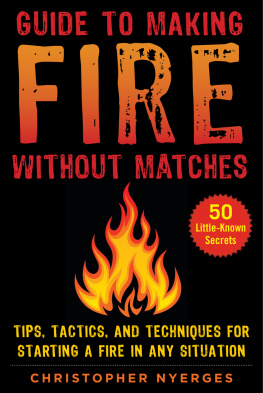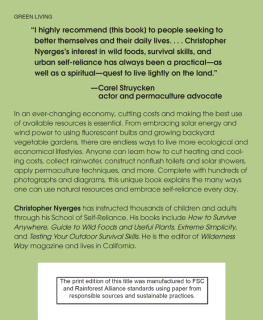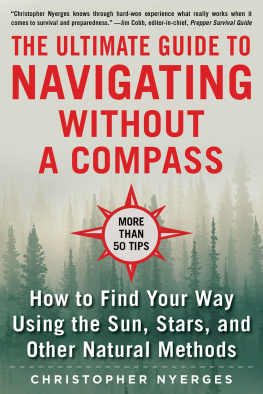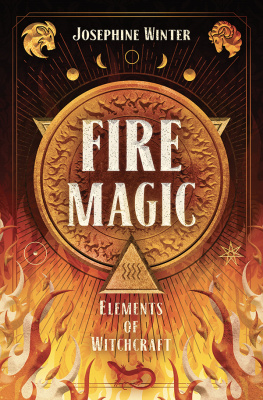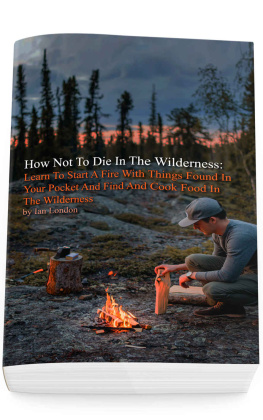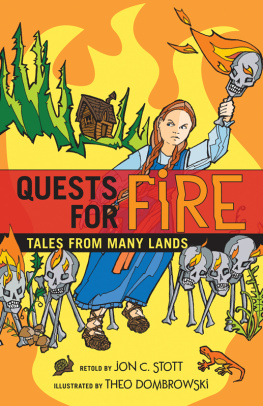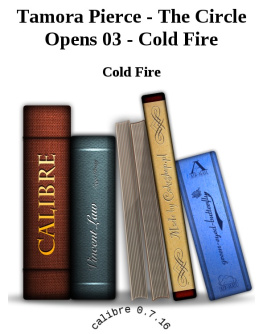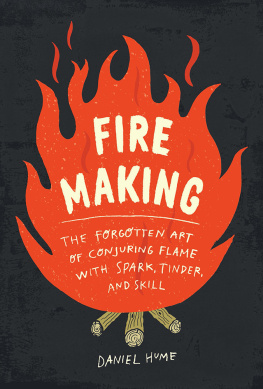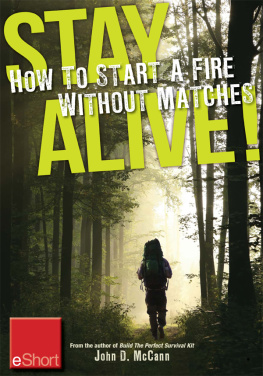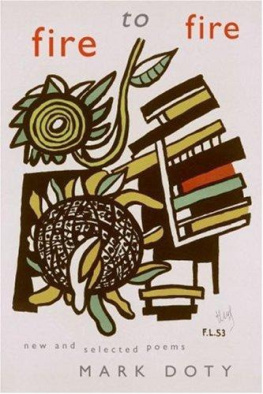

Copyright 2020 by Christopher Nyerges
All rights reserved. No part of this book may be reproduced in any manner without the express written consent of the publisher, except in the case of brief excerpts in critical reviews or articles. All inquiries should be addressed to Skyhorse Publishing, 307 West 36th Street, 11th Floor, New York, NY 10018.
Skyhorse Publishing books may be purchased in bulk at special discounts for sales promotion, corporate gifts, fund-raising, or educational purposes. Special editions can also be created to specifications. For details, contact the Special Sales Department, Skyhorse Publishing, 307 West 36th Street, 11th Floor, New York, NY 10018 or .
Skyhorse and Skyhorse Publishing are registered trademarks of Skyhorse Publishing, Inc., a Delaware corporation.
Visit our website at www.skyhorsepublishing.com.
10 9 8 7 6 5 4 3 2 1
Library of Congress Cataloging-in-Publication Data is available on file.
Cover design by Tom Lau
Cover illustration credit: iStockphoto
All photographs and illustrations in this book are courtesy of the author, unless otherwise noted.
Print ISBN: 978-1-5107-4989-4
Ebook ISBN: 978-1-5107-4991-7
Printed in China
Larry Dean Olsens Outdoor Survival Skills book was my first serious introduction to the world of fire. Through his book, he was my tutor for fire by the bow and drill. Though we had phone conversations, and shared e-mails, when I was the editor of Wilderness Way magazine, I regret that we never met in person. Larry was perhaps the singular individual who kept alive the primitive technologies when no one else was interested.
It is to Larry Dean Olsen, and his memory, that I dedicate this book.
TABLE OF CONTENTS
ACKNOWLEDGMENTS
I want to thank and acknowledge everyone who assisted in some way with this book, and those who walked with me on the Fire Path. Thank you Gary Gonzales, Piero del Valle, Daniela del Valle, Alan Halcon, Dude McLean, Rick Adams (who has many photos in this book), Carlos Hall, Al Cornell, Paul Campbell, Steve Watts, Jim Robertson, Keith Farrar, James Ruther, Enrique Villasenor, Nachshon Rose, Helen, and everyone else who taught me something along the way, whose names I may have never known...
FOREWORD
BY AL CORNELL
Fire: Its the main reason we as modern humans are here, and exist as we do today.
For our prehistoric ancestors, it was the center of their lives. Early hominids who learned to use it evolved; those who didnt, disappeared.
Its importance in prehistoric and early historic times became so recognized that it also became highly ceremonial. From Egyptians and Romans to the American Indians of today, the starting of a ceremonial fire signaled the beginning of an important event, be it military or tribal.
In our modern societies we still use fire as the symbol of the initiation of important events, such as the Olympic Games and as eternal flames to show reverence to historical sites and personages like the Tomb of the Unknown Soldier and the grave site of President Kennedy, both at Arlington cemetery.
Although fire in the lives of humans today plays hundreds of invaluable roles, these roles have become secondaryall but ignoredas we go about our daily routines. However, fire can quickly become of utmost importance when we find ourselves away from our urban environments and back in nature. Wilderness enthusiasts, such as hikers, hunters, and backpackers, recognize the importance fire represents in a cold-weather survival emergency and willwith the major support of firelive through such difficult challenges. Fire can become the big mitigater when we make life-threatening mistakes in the woods. However, those who venture outdoors and choose to take a cavalier approach toward fires potential life-saving role may someday be carried out of a forest in a deceased recovery operation.
Therefore the importance of learning all about how to use fire to make the wilderness experience both enjoyable and safe cannot be overstated. The more knowledge and experience modern peoples acquire about fireespecially the prehistoric methodsthe more adapted and confident they become about spending time outdoors. Even during times of benign weather, fire makes outdoor life so much more enjoyable, especially with the morning coffee, cooking meals, and the nighttime social fire. And, the experience is further enhanced when the fire is started with, for example, a bow drill, creating an ember, and then with some tinder, slowly blowing that ember in order to give birth to fire.
Learning outdoor skills, such as erecting a shelter, is empowering. But learning to make fire from materials collected in nature is absolutely transforming.
We should all learn these outdoor fire skills: pioneer fire skills, as well as prehistoric fire skills. Armed with this knowledge, we will never be the same. It literally will transform us!
And then, fire forever ties us to our prehistoric ancestry.
ABOUT AL CORNELL:
Cornell was one of the teachers of the author of this book. Cornell, born and raised in Central California, entered the US Army as a Second Lieutenant and became an Army helicopter pilot. He served on active duty for thirty years, spending seventeen years overseas in four Latin American countries and two Asian countries, including two tours in Vietnam as a helicopter pilot. Cornell and spouse retired to Sedona, Arizona, in 1994, and among other volunteer activities, such as Search and Rescue, he teaches a variety of wilderness skills and prehistoric skills, focusing on wilderness safety and preparedness. He and his teaching partner Michael Campbell teach fire-starting for survival several times a year at SAR (Search and Rescue) Basic Training.
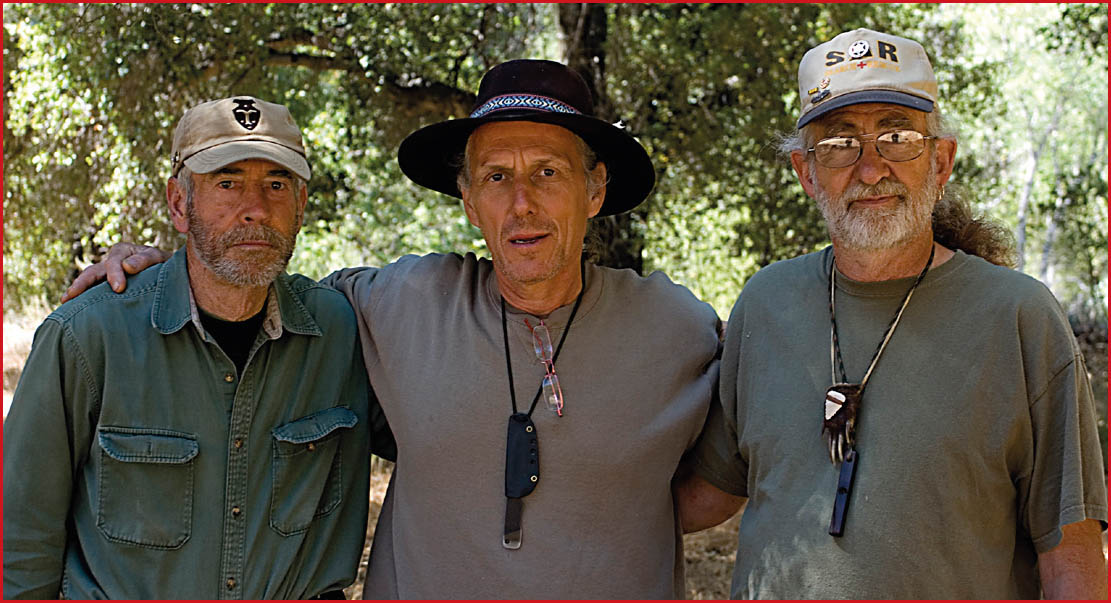
Al Cornell, from left, author Nyerges, and Michael Campbell. (photographer unknown).
INTRODUCTION
I have always been fascinated by fire. As the other frivolous novelties of youth came and went, there was always fire.
As a child, I would sit by the fireplace and watch the flames as they consumed wood. I loved the look, the smell, the sound of fire. Something about its unique qualities captured my attention.
As a young child, I would play with matches and watch each match scratch to a flame, and then I would hold it as long as I could before it would start to burn my fingers and I would blow it out.
As a teen, a campout was not a campout without a fire. It was the central organizing force of any group on any outdoor excursion. We sat around the fire and talked, and sang, and ate, and stared into the dazzling light show that both warmed us and lit our night. Wed even sit around a large campfire in a light rain, because the fire made us so much more comfortable, and would dry us about as quickly as we got wet.
As a young adult, I read about Native Americans of the Plains, and how they were masters of their environment, and I marveled at their ability to eke fire from wood. I knew that to be the masters of your environment, you had to have a broad and intimate knowledge of plantsplants for food, medicine, soap, fiber, and yes, for the tools for making fire.
Eventually, I obtained a copy of Larry Dean Olsens
Next page
